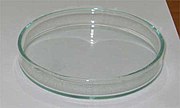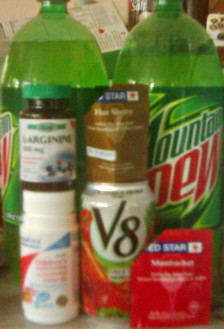Okay, now that the boring review is over with…
Consider the cell. It doesn’t matter what kind of cell – bacterial, archael, fungal, animal, whatever. It’s still a tiny droplet of slightly salty water, thickened by a bunch of enzymes, other proteins, and various other substances floating around in the water. There’s also one other component that makes this a “cell” rather than soup: a bubble made of fatty material that the droplet is wrapped in, called the cell membrane. Depending on what kind of cell you’re thinking of, there may or may not be a “cell wall” made of some sort of rigid material, with the cell membrane inside of it. There may also be more than one membrane as is the case with the classic “Gram negative” style of bacterium, which has a second “outer” membrane wrapped around its cell wall. If it’s a eukaryotic cell, it’ll even have tiny little “organelles” inside itself wrapped in their own little membranes…but whatever. It’s the innermost one, inside of whatever cell wall may be there but wrapped around the cell’s guts, that we’re concerned with here.
Since stuff that will dissolve readily in water doesn’t tend to dissolve well into fats, and vice-versa, the cell membrane not only prevents stuff dissolved in the water inside the cell from leaking out, it also prevents stuff in the water outside from getting in. This lets a cell maintain itself at near neutral pH even if it happens to live in a very acidic environment, or an appropriate level of, say, sodium salts even if it lives in the Great Salt Lake.
This brings us back again to benzoic acid, which you should recall from the previous post alternates between a dissociated hydrogen-ion-and-benzoate-ion form and a combined, netural form in water. You may have noticed that foods preserved with benzoates tend to be sour, like fruit juices or soda. That’s because “sour” is the flavor of acid, and benzoic acid’s ability to be a preservative is only good in acidic environments
Useless Knowledge Break: the German word for acid is “Saurstoff”. Yes, that is pronounced like “sour stuff”, and no, that is not a coincidence.
An acidic environment means lots of extra hydrogen ions (“protons”) floating around. That also means that when a molecule of benzoic acid splits into a hydrogen ion and benzoate ion, it takes less time before another hydrogen ion comes by and the molecule can recombine again and therefore a bigger majority of the benzoate floating around at any moment is in the combined, somewhat fat-soluble neutral form. In that form, it can soak into a cell membrane if it encounters one.
If that molecule drifts through the membrane and gets to the inside of the cell, it may touch the less acidic watery environment there and dissociate into ions again and be unable to return through the membrane. The released hydrogen ions mean the inside of the cell becomes more acidic. As of today (20080806), the Wikipedia entry for Sodium Benzoate cites a single paper from the early 1980’s saying that when the inside of a yeast cell gets acidic enough, it prevents a specific step in the energy-generating process from working. This may be true, but there’s more to the story than this.
Obviously the membrane can’t totally seal the cell off from the outside, or the cell would be unable to excrete wastes or take in food molecules, so there are numerous specialized “transport” proteins that stick through the membrane to allow specific kinds of molecules in and out. Lots of biochemical reactions release hydrogen ions, so there are transport proteins that can shove hydrogen ions out of the cell and into the cell’s surroundings. The problem is that all substances naturally diffuse from areas of higher concentration to areas of lower concentration, so in an acidic environment the natural direction that hydrogen ions “want” to flow is into the more neutral cell. These transport proteins can shove the hydrogen ions in the opposite direction, but like pushing a boulder uphill it costs energy. This seems to be the primary reason that benzoic acid prevents bacteria and yeasts from growing – it makes them waste energy that they would be using for growth just to keep taking the hydrogen ions that the benzoic acid helps leak in through the cell membrane and shoving them back outside. The figure above is linked to a page at Helsinki university that discusses this type of preservative action in more detail.
Simple and elegant, and this seems to have been assumed to be the whole explanation for some time. But what happens to the benzoate ion when its hydrogen ion gets pumped away? Does it do anything?
Coming up next: Endocannibalism!




 Julius Robert Petri’s idea was so useful that we still use it today. Oh, yeah, and they named the
Julius Robert Petri’s idea was so useful that we still use it today. Oh, yeah, and they named the  To your right, you should see the ingredients used in this project. Yes, those two bottles in the background are there on purpose. I’m trying to make…Mountain Dew® Wine.
To your right, you should see the ingredients used in this project. Yes, those two bottles in the background are there on purpose. I’m trying to make…Mountain Dew® Wine.